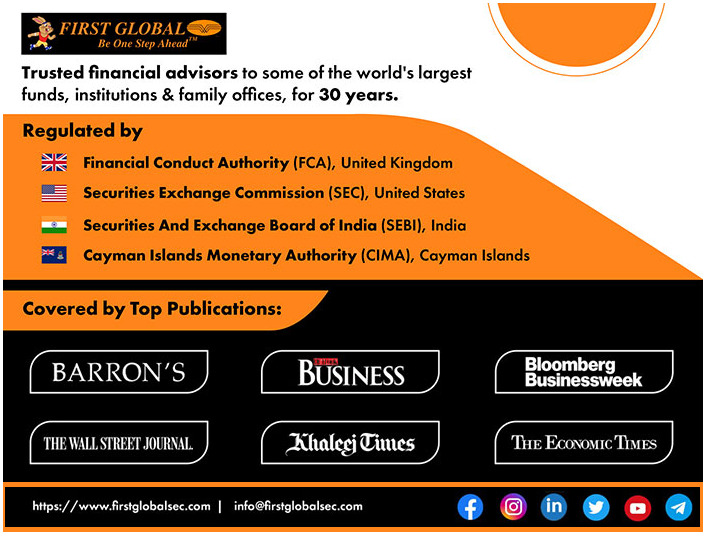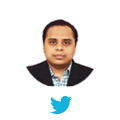The Wait Is Finally Over: India Gets Included in JP Morgan’s Global Bond Index
JPMorgan announced on Friday, 22nd of September, that India's domestic bonds will be added to the Government Bond Index-Emerging Markets (GBI-EM), a global index tracked by approximately $236 billion in funds.
This inclusion is scheduled to commence on June 28, 2024, and will be phased in over a ten-month period, with incremental increases of 1% in its index weighting till India reaches the maximum allocation of 10%.
While the newspapers are full of how this marks the coming of age of the Indian bond market, let us examine the possible implications on a realistic and nuanced scale.
First the big picture:
Now for the details
The Historical Context
India initiated discussions in 2019 regarding the incorporation of its debt into global indexes and explored clearing and settlement arrangements with Euroclear. In 2020, it removed foreign investment restrictions on certain government securities as part of its strategy to gain entry into global bond indexes. As a result, several bonds are now classified under the "Fully Accessible Route" with no foreign investment limitations. Part of the reason India has entered this index is also due to the gap created by the sanctions on Russia, which have taken away a significant market.
Concurrently, FTSE Russell, another index provider, is considering India's inclusion in its FTSE Emerging Markets Government Bond Index and will announce its decision on September 28.
What are the Implications?
At a time when global bond markets are experiencing uncertainty, the news of Indian government bonds being included in global bond indices is expected to have a stabilizing effect on Indian bond yields.
To put it simply, this means that the interest rates on Indian government bonds are likely to remain relatively steady. For instance, the benchmark 10-year Indian bond yields have ranged from 7.09% to 7.25% in September. In contrast, similar 10-year US bond yields increased by more than 40 basis points (bps) i.e. 0.4 percent point during the same period.
Looking ahead, if other index providers also add Indian bonds to their indices, it could lead to a longer-term positive effect, potentially resulting in lower interest rates in India.
This inclusion could also offer some relief for the Indian Rupee, which has been trading near its all-time low value. However, this doesn’t take away from the fact that ultimately the macro-economic environment reigns supreme.
With oil prices back above $90 a barrel, strong upside momentum in US treasury yields and the dollar, caution is warranted.
In our opinion, there's unlikely to be any significant fall in bond yields in the near term.
Expected Inflows into Indian Government Bonds Which Are Under-owned By Global Investors
Now, let's delve into the specifics. India is expected to have a maximum 10% representation in the GBI-EM Global Diversified Index. Currently, there are funds worth $213 billion that use this index as a benchmark. This means that we can anticipate an inflow of approximately $21.3 billion as a result of this inclusion, which will happen gradually. It begins with a 1% addition to the index on June 28, 2024, and will reach the maximum limit of 10% by March 31, 2025.
To put this expected influx of funds into perspective, consider the foreign portfolio investment (FPI) in Indian debt since 2019. After 2019, there were three years of continuous net outflows from debt investments. Even with the recent net inflow of nearly $3 billion year-to-date, we have not yet recovered from the substantial net outflow of $11 billion observed in 2020. Therefore, the anticipated inflow of over $20 billion resulting from the index inclusion could play an important role in financing the increased deficits and absorbing the increased supply of government bonds.
Debt Investments in India by FPIs

Data Source: NSDL
*As of September 22, 2023**
Investments via the Voluntary Retention Scheme
Characteristics of the Index Inclusion Securities
It's essential to note that only bonds issued under the government's Fully Accessible Route (FAR) are eligible for index inclusion. These FAR securities have no foreign portfolio investment limit.
To be eligible, these bonds must have a maturity of more than 2.5 years and a total outstanding size of at least $1 billion. This narrows down the selection to 23 out of the 31 bonds issued under the FAR route, with a combined outstanding value of $338 billion.
What's noteworthy is that the bid-offer spread (the difference between buying and selling prices) for FAR securities is more favorable compared to the current emerging market bonds in the index.
Additionally, FAR securities are significantly under owned by foreign portfolio investors, with only $9 billion invested in them compared to a total outstanding value of $338 billion. As a result, there is a significant potential for substantial foreign portfolio investment inflows into these securities.
The weighted average maturity of these eligible FAR securities is relatively long, at 12.3 years. Nearly 40% of the incoming funds are expected to flow into Indian government securities with maturities of 10 years or more. This could lead to a reduction in the term premium.
Term premium, in simple terms, represents the extra yield that longer-term bonds offer compared to shorter-term ones. Historically, this premium has averaged around 90 basis points (0.9%). In other words, 10-year bonds, on average, yield 0.9% more than 1-year bonds.

Source: CCIL, First Global
However, the term premium is influenced by economic cycles. During periods of interest rate cuts, short-term bond yields tend to fall more compared to longer-term yields, steepening the yield curve and increasing the term premium. Conversely, during rate hike cycles, as we are witnessing now, the term premium can decrease or even turn negative.
If the supply of government bonds with maturities of 10 years and above does not increase to match the expected demand from passive inflows, we could see a decline in the term premium as demand outpaces supply.
Looking Ahead
In the long term, the movement of Indian bond yields is expected to align more closely with the global economic environment. This is because active investors may also increase their participation in Indian bonds.
The volatility of flows may increase during times of global financial stress as assets under management of the emerging market bond funds fluctuate. Currently, foreign portfolio investors are utilizing only 23.8% of the allotted limits for investing in Central Government Securities.
Considering the current global scenario, including the price of Brent oil at $90 a barrel, the US dollar's strong performance with a 5.5% yield advantage, and Indian government bond yields hovering around 7% with real yields slightly lower than those of their US counterparts, it is unlikely that we will see a significant rally in Indian government bonds.
Therefore, it's advisable not to make investment decisions solely based on this news unless there are other relevant macroeconomic developments to consider.
From Your Friends at First Global
If you want any help at all in your wealth creation journey, in managing your Investments, just drop us a line via this link and we will be right by your side as your wealth advisor, super quick!
Or WhatsApp us on +91 88501 69753
Chat soon!


Economists Think Dollar's Fall May Explain the Recent ‚ÄėRally‚Äô by Steve Liesman
Einstein taught us about relativity in nature. Now come Devina Mehra and Shankar Sharma of First Global to teach us about relativity in financial markets -- and raise some serious questions about just what is driving stock prices.

First Global reports are quite credible and, on occasion, more than that.
What prompts this mention is Intel's earnings report and the fact that First Global has had a pretty good bead on the company and its stock.

AMD up again following First Global upgrade to ‚Äėbuy‚Äô (AMD) By Tomi Kilgore
Analyst Kuldeep Koul at First Global upgraded Advanced Micro Devices (AMD) to "buy" from "outperform," given the "exceptional traction" that the chipmaker's Opteron line of processors has been able to get.

Baidu Climbs on First Global‚Äôs ‚ÄėOutperform‚Äô Outlook
Baidu Inc., the operator of China’s most-used Internet search engine, rose to the highest price in two weeks after First Global rated the shares “outperform? in new coverage.

Personality counts: Walmart's frugal, but Target charms
"It's better to take a slight hit on [profit] margins and keep on moving and inventing," says First Global Securities. And at least for now, Target is inventing in a way that appeals to consumers with money to spend.

Dead Batteries
At 11 times trailing earnings, Energizer is cheaper; Gillette's multiple is 25. But cheaper doesn't mean better, says First Global.

Bipinchandra Dugam @bipinchandra90
@devinamehra @firtglobalsec
invested in both GFF-GTS and Super I50. Thank you very much for such wonderful investing experience with completely new approach. In my 15years of investing first product I felt which close to what customer want.

Shishir Kapadia @shishirkapadia1
@firstglobalsec @devinamehra
by far you are the best, I have not come across transparency, acumen, global expertise, exposure, protection of capital, delivering return from any fund/ fund managers. Invested very small size in 3 products will keep on increasing it over the period

Piyush Bhargava @PiyushB88762654
@devinamehra @firstglobalsec
Thanks you team FG specially Devina, my investment doubled in less than 3 years in SDPB As a investors & PMS distributor of your product looking to have a long-term relationship with the company.
@KarmathNaveen the person with whom I always interact

Sumeet Goel @GoelSumeet
Very happy & relaxed to be invested with first global pms

Shishir Kapadia@shishirkapadia1
Congratulations on super performance, above all transparency and systematic process are unmatchable.
One must opt this, if person consider him/her self as an investor. Very happy to be part of this since invested. FG has managed worst year (ie 2022) so efficiently and skillfully.

SY @SachinY95185924
With so much of volatility in the market, risk management is very important part & considering that FG is doing awesome work!!! Kudos to you Chief

Amit Shukla @amitTalksHere
Truly outstanding. As a retail subscriber to #fghum #smallcase, I can vouch for the Nifty beating returns (8% vs 3%) in last 1 year. Keep up the awesome work @firstglobalsec
We can load above testimonials on site as a scroller, and just below that we can add a section for compliments . Below tweets are comments and praises are related to our content, performance and some our direct compliments to you.

ADIT PATEL @ADITPAT11226924
Good team...
Special mention @KarmathNaveen .. he is soo helpful anytime of the day or night..

Hindustani @highmettle
Bought Peace with FG-Hum.Moving all funds from DIY investing to well managed and diversified PF at low cost.
It has doubled almost, excellent pick.Every small investor must invest in her FG-HUM Smallcase.

Suresh Nair @Suresh_Nair_23
I have 8 small cases and your has been the most rewarding ones .. thank you Devina.

Sayed Masood @SayedM375
There is absolutely no doubt that she is one of the best investors of India in modern times but more importantly, she shares the most sincere and sane advice with retail investors.

SY @SachinY95185924
Wow Superb ReturnsūüĒ• Congratulations Chief for being Number 1 among all PMS!!!
You are one of the sharpest mind in Global Stock Market

AnupamM @moitraanupam
Congratulations Devina, results talk in itself!

Abhishek @simplyabhi21
Congratulations ma‚Äôam @devinamehra ! The consistency you have in maintaining the top rank position is outstanding! ūüĎŹ

Mihir Shah @Mihir41Shah
We are learning More about markets (& Life ) thanks to U than we learnt in our Professional courses.A BIg Thank You, Wish all get Teachers Like You!!

Sumit Sharma @MediaSumit
"The ability to be comfortable with being outside consensus is a superpower in investing...and in life." Devina ji hits the nail on its head!

Majid Ahamed @MajidAhamed1
Congratulations @devinamehra mam! All the best for long term returns as well.

Vinay Kumar @VinayKu05949123
This is the wonderful session I have ever attended till date. One of the most fruitful hour of my life. Devina madam, ur clarity on financial mkts is simply superb.The way u portray the facts supported by "data" about stock mkts is really astonishing.I will listen again.Thanks.

VIJAY @drippingashes
I loved to read your journey, insight and philosophy. It's a pleasure to read and know of your takes on market and life.

MNCūüŹĻ @Focus_SME
Check & follow @devinamehra's timeline for lots of post debunking such rosy stories. Also, she gives amazing ūü§© sector directions/hints.

KLN Murthy @KLNMurthy2016
Good actionable insights, great article!

Suresh Nair @gkumarsuresh
Devina Madam is simply terrific... good knowledge, straight and simple thinking.
Very difficult to emulate such traits. I listen her past interviews from youtube.
Respect...!!!!

DD @AliensDelight
One of the brightest minds in the world of finance :)

Radhakrishnan Chonat @RCxNair
ūüď£ Calling all investors! Just had an incredible interview with @devinamehra, Chairperson and MD of First Global. We discussed the importance of global diversification, effective asset allocation, and the risks of sitting on the sidelines. Trust me, you don't want to miss this!

siddarthmohta @siddarthmohta
Excellent performance. Flexibility is the key as you have mentioned it earlier also. Cannot have finite rules for infinite mkt opportunities.

Boom (ŗ¶¨ŗßĀŗ¶ģ)@Booombaastic
To be honest, the insights which Devina madam brings in is very enriching..have learnt a lot from them...

Himanssh Kukreja @Himansh02428907
One of the most accurate analysts :)
I always look forward to you interviews mam

Abhijeet Deshpande @AbhijeetD2018
Madam, It is always a treat to read your insight, not only on business but on other topics also!!

Dada.AI @dada_on_twit
Thanks for this wisdom ma'am. Always love hearing your thoughts on everything equity. :-)

adil @zinndadil
Excellent points!
Can clearly feel this thread is a product of marination of many books and years of experience. ūüĎć

Kamal thakur @Kamalgt10
Superb !!
Your knowledge, analysis & articulation is simply great ūüĎć

Tanay @Tanay36232730
Follower on Twitter and Subsciber on YouTube of First Global, really helping me in my investment desicion. Thanks
Copyright 2019, All Rights Reserved. Developed By : Hvantage Technologies Inc. Maintain By : Aarav Infotech